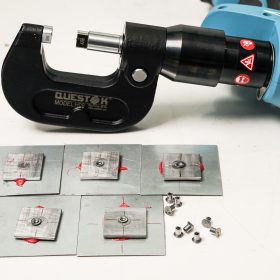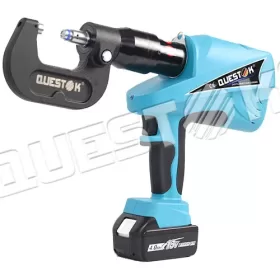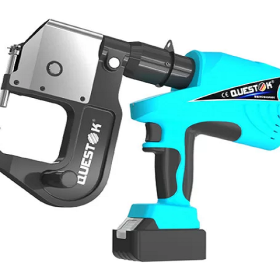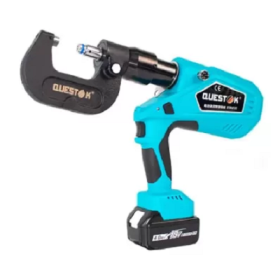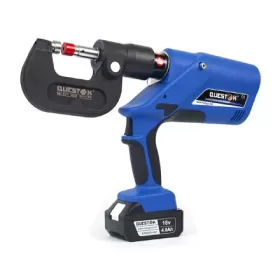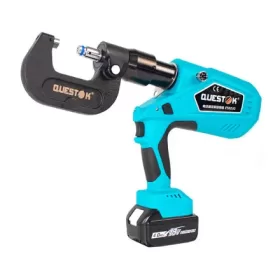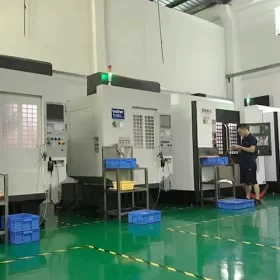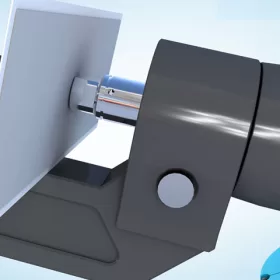Creating Strong Joints and Connections with Stainless Steel Hollow Rivets
Stainless steel hollow rivets are an excellent choice for creating strong and durable joints in various applications. Their unique design and material properties make them well-suited for demanding environments, ensuring reliable connections. This article explores the advantages and techniques of using stainless steel hollow rivets to achieve robust joints and connections.
Advantages of Stainless Steel Hollow Rivets
Stainless steel hollow rivets offer several benefits that make them ideal for critical applications:
Corrosion Resistance: Stainless steel’s exceptional corrosion resistance protects joints from harsh elements, ensuring long-term durability.
Strength and Load-Bearing Capacity: The hollow design creates a reinforced core that provides excellent load-bearing capacity, resisting shear and tensile forces.
Vibration Resistance: The rivet’s expansion inside the hole during installation creates a tight connection that resists vibration and loosening.
Lightweight and Compact: Hollow rivets are lightweight and compact, allowing for space-saving designs and portability in various applications.
Cost-Effectiveness: Compared to other fastening methods, hollow rivets offer a cost-effective solution while maintaining high-quality connections.
Applications of Stainless Steel Hollow Rivets
Stainless steel hollow rivets find applications in a wide range of industries:
Automotive: Joining body panels, exhaust systems, and other structural components.
Construction: Connecting metal roofing, siding, and exterior cladding systems.
Aerospace: Assembling aircraft components, interior panels, and engine assemblies.
Marine: Securing boat hulls, decks, and railings in harsh marine environments.
Other Industries: Appliances, HVAC systems, furniture, and various manufacturing processes.
Installation Techniques for Stainless Steel Hollow Rivets
To ensure the proper installation of stainless steel hollow rivets, follow these steps:
1. Prepare the Joint: Align the components to be joined and mark the locations for rivets.
2. Select the Correct Rivet Size and Type: Choose the rivet with the appropriate diameter and length based on the thickness of the materials being joined.
3. Drill the Holes: Use a drill bit slightly larger than the diameter of the rivet to create holes for the mandrel insertion.
4. Insert the Rivet: Insert the rivet mandrel into the hole from one side and place the rivet head on the other side.
5. Set the Rivet: Use a rivet gun or hand tool to pull the mandrel, expanding the rivet tail inside the hole and creating a tight connection.
Design Considerations for Strong Joints
When designing joints using stainless steel hollow rivets, consider these factors:
Rivet Spacing: Determine the optimal spacing between rivets to ensure load distribution and joint strength.
Edge Distance: Avoid placing rivets too close to edges, as it can weaken the joint and increase the risk of bending or cracking.
Material Thickness: Select rivets that are suitable for the thickness of the materials being joined to prevent overexpansion or insufficient expansion.
Environmental Conditions: Consider the environmental conditions in which the joint will be used and specify stainless steel with appropriate corrosion resistance levels.
- Company News
- Industry News
- Tag
- Tags
-
The Advantages of Questok Rivet Guns: Precision, Efficiency, and Durability
In industrial fastening applications, the choice of tools directly impacts productivity, safety, and long-term cost-effectiveness. Questok rivet guns have emerged as a standout solution for professionals across aerospace, automotive, and construction sectors. Combining advanced engineering with user-centric design, these tools deliver unmatched performance. Below are the key advantages that make Questok rivet guns a preferred choice:
-
Rivet Gun FAQ
Rivet Gun FAQ-SPR
-
Fast Assembly and Repair With Cordless Solid Rivet Gun
Questok cordless solid rivet gun stands out as a pivotal innovation, merging portability with power to facilitate efficient and effective fastening in a myriad of applications.
-
Redifine The Role of Self-piercing Riveting Gun Machine
Self-piercing riveting adopts high-speed mechanical fastening skill that joins thin sheet materials, typically steel and aluminum alloys.
-
The Latest Innovations in Clinching Tool Design
Explore the latest innovations in clinching tool design, redefining precision, efficiency, and versatility in material joining.
-
The Application and Maintenance of Self-Piercing Rivet Guns
Delve into the applications of self-piercing rivet guns in the automotive and aerospace industries and reveal the essential maintenance practices that ensure their accuracy and efficiency.
-
Rivetless Riveting Gun for Ventilation Duct Projects
The ventilation duct rivetless gun is a tool for riveting ventilation ducts without rivets.
-
Guide to Using Self-Piercing SPR Riveting Gun
In the automotive industry, self-piercing SPR (Self-Piercing Rivet) riveting guns are commonly used for joining metal components in vehicle bodies, including BMW vehicles.
-
Rivet Gun FAQ
Rivet Gun FAQ-SPR
-
Versatile Fastening- Applications of the Handheld Rivet Gun Across Industries
In the realm of fastening, the handheld rivet gun stands as a testament to ingenuity and versatility. Its ability to effortlessly join materials with sheer strength and permanence has revolutionized manufacturing and construction processes, leaving an enduring mark on diverse industries. Aerospace: Where precision and reliability are paramount, the rivet gun shines. In aircraft assembly, […]
-
Time-Saving Tools- Speeding Up Projects with Electric Blind Rivet Guns
In the whirlwind of project deadlines, every minute counts. But what if there was a tool that could dramatically reduce assembly time, giving you an edge in the race against the clock? Enter the electric blind rivet gun: your secret weapon for lightning-fast and effortless riveting. Electric blind rivet guns are the ultimate time-savers for […]
-
Streamlining Fastening- How an Electric Blind Rivet Gun Enhances Efficiency
Introduction In the realm of manufacturing and assembly, fastening plays a crucial role in securing components and ensuring structural integrity. Traditional manual rivet guns, while reliable, are often time-consuming and labor-intensive. The advent of electric blind rivet guns has revolutionized the fastening process, significantly enhancing efficiency and productivity. This article delves into the benefits of […]
-
Top Trends in Electric Rivetless Clinching Guns
In the realm of fastening technology, electric rivetless clinching guns have emerged as a revolutionary solution for a wide range of industrial applications. These advanced tools offer several преимущества and capabilities, revolutionizing the way businesses approach their fastening needs. Adoption of Brushless Motors Brushless motors have gained significant traction in electric rivetless clinching guns due […]
-
Top Features and Benefits of Universal Self-Piercing Riveting Guns
In the realm of metalworking, precision and efficiency are paramount. Universal self-piercing riveting guns, often referred to as self-pierce riveting guns, embody these qualities, offering remarkable benefits for various applications. These innovative tools feature technologically advanced functions that enhance productivity, reliability, and overall performance, making them indispensable in industries such as aerospace, automotive, construction, and […]
-
The Role of Automation in Electric Rivetless Clinching
Electric rivetless clinching (ERC) is a lightweight joining process that eliminates the need for rivets or other fasteners. This can lead to significant cost savings and increased production efficiency. Automation plays a critical role in ERC, enabling high-speed and high-volume production. Automated Feed Systems Automated feed systems are used to accurately position the two workpieces […]
-
Why Choose a Universal Self-Piercing Riveting Gun for Your Projects?
In the realm of construction and fabrication, riveting guns stand as indispensable tools for creating secure and robust connections. Among the various types available, universal self-piercing riveting (SPR) guns have emerged as a game-changer due to their versatility and efficiency. This article will delve into the compelling reasons why choosing a universal self-piercing riveting gun […]
